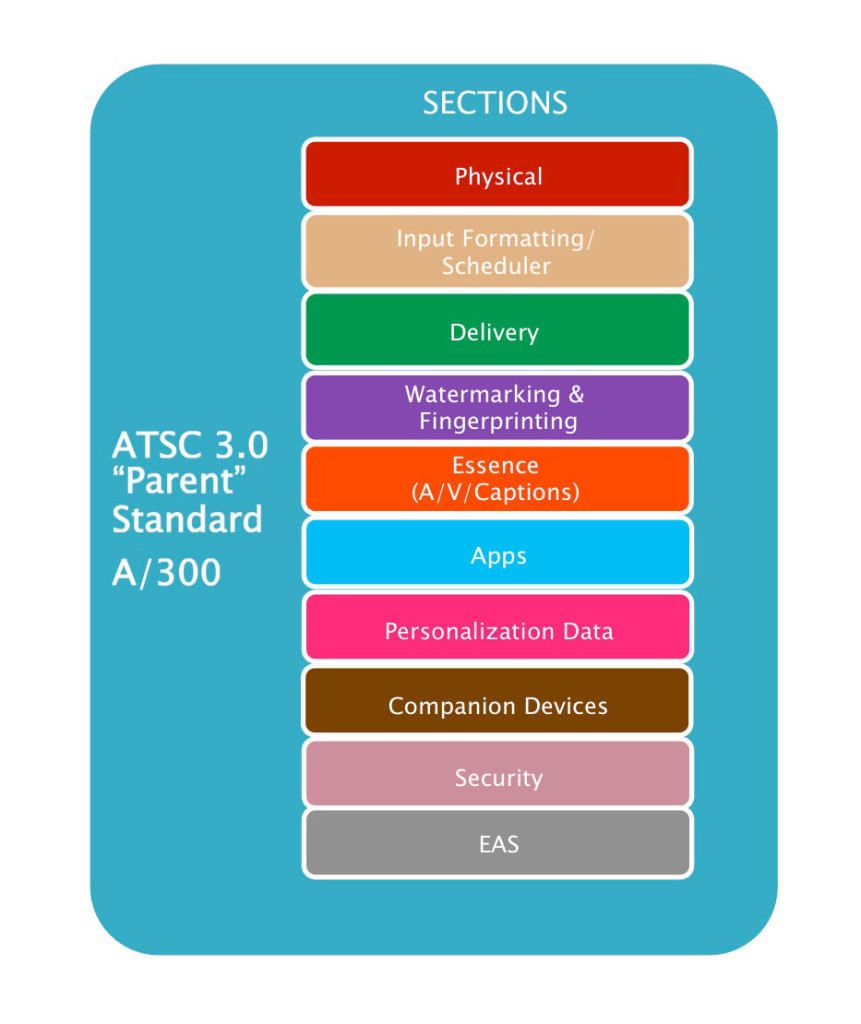Hundreds of technical experts are quietly finalizing the next revolution in over-the-air broadcasting, an effort that will soon enable the first Internet Protocol-based broadcast system in the world – the “next generation” TV platform currently known by its technical handle of “ATSC 3.0.”

Our current ATSC 1.0 digital TV system is nearly 20 years old, based on technologies that are even older. We’re excited about the potential for ATSC 3.0 to position TV broadcasting as the wireless data pipeline of the future.
 As TV broadcasters representing more than 200 local stations, Pearl TV is deeply involved with the standards setting work of the Advanced Television Systems Committee to create the “next generation” TV standard. We are enthusiastic supporters of this move to an “all IP” future, and are playing an active role in developing the standard.
As TV broadcasters representing more than 200 local stations, Pearl TV is deeply involved with the standards setting work of the Advanced Television Systems Committee to create the “next generation” TV standard. We are enthusiastic supporters of this move to an “all IP” future, and are playing an active role in developing the standard.
The next generation transmission system for TV broadcasting is like a flexible toolbox with new capabilities. We’ll finally be able to realize the benefits of datacasting, with an architecture that allows for cellphone-like towers to enhance reception through a single frequency network.
The Big Difference: Internet Protocol
 Click for higher resolutionAs a native IP platform, next generation TV provides more flexibility and interoperability with Internet content. Broadcasts will be enhanced by information-rich metadata and the ability to seamlessly integrate with other dynamic IP services and provide hybrid services, a blend of content broadcast over-the-air mixed with content delivered IP, that will bring innovation and real value to consumers.
Click for higher resolutionAs a native IP platform, next generation TV provides more flexibility and interoperability with Internet content. Broadcasts will be enhanced by information-rich metadata and the ability to seamlessly integrate with other dynamic IP services and provide hybrid services, a blend of content broadcast over-the-air mixed with content delivered IP, that will bring innovation and real value to consumers.
Our viewers today want an even better video experience, but they also expect TV to follow them everywhere they go at any time. Consumers will want Ultra High-Definition programming with High Dynamic Range capability and also the ability to watch shows deep inside apartment buildings and on mobile devices on city streets and public transportation. Viewers will expect high-quality video that doesn’t freeze up when Internet usage peaks, and an experience that doesn’t strain a data plan.
We believe viewers will also want broadcast services that integrate seamlessly with a growing suite of Internet-based services. They need reliable, redundant, advance emergency alerting. And next generation TV will allow broadcasters to meet all of those demands.
Next-generation television will delivery a super fast broadband pipe to the home, giving broadcasters the ability to tailor their programming and advertising and to measure that advertising in new ways.
Our next-gen transmissions will be able to reach mobile devices – the very smartphone and tablets that have become indispensable parts of our modern lives. Whether on the big screen or small, over-the-air broadcasting will bring much more than just linear programs to viewers.
Next generation TV will enable interactive advertising, and enhanced emergency alerts, including “wake up” capability for sleeping devices, vivid graphics, maps, and announcements to keep viewers informed. With its non-real-time capabilities, broadcasters will also be able to send programs ahead to viewers – including, potentially, new subscription-based options.
The broadcast platform of the future merges the best capabilities of the over-the-air and broadband viewing. The result is a convergence of the most popular method of watching live events with the variety of programming available online.
Not Like 2009
It’s wrong to look ahead to the future of television through the same lens used to gaze back at the analog-to-digital transition. Certainly, TV broadcasters realize there won’t be a second 6MHz channel available. Moreover, we don’t think an elaborate government program that subsidizes receivers will be necessary. In fact, we envision a cooperative effort to enhance over-the-air broadcasting that will allow ATSC 1.0 and ATSC 3.0 to coexist. New 3.0 devices will provide both 1.0 and 3.0 reception.
Next generation TV won’t be a “one-size-fits-all” standard like the current digital TV platform. Best of all, ATSC 3.0 is designed from the ground up with a suite of standards that can be updated in the future.
ATSC 3.0 is truly a new broadcast platform that is flexible, adaptable, and just what broadcasters need in our ever-changing media world. The next generation TV standard development is rapidly coming to a conclusion, and Pearl TV’s broadcast companies are proud to join the bandwagon in support of a flexible, adaptable TV standard built for the future.
Anne Schelle is Managing Director of the Pearl TV partnership of nine broadcast companies that operate more than 200 U.S. TV stations throughout the country.
Editor’s Comment
This article is a response to Matt’s recent Display Daily article ATSC 3.0: Is US Broadcasting Doomed? The ATSC3.0 standard was always planned, allowing for the idea that backwards compatibility was not planned, so it’s no surprise to the broadcasters that have worked on developing it. It also pointed out that DVB-T and DVB-T2 are not backward compatible.
ATSC expects that the transition to ATSC 3.0 will take some time, it won’t be a “flash switchover” as the digital switchover was. The two standards are expected to co-exist during the transition. Of course, some of the features may be very attractive to those that are not connected to fast broadband pipes. (BR)

